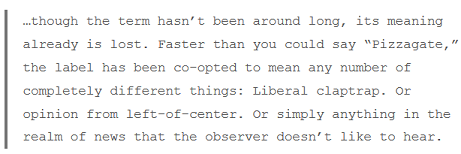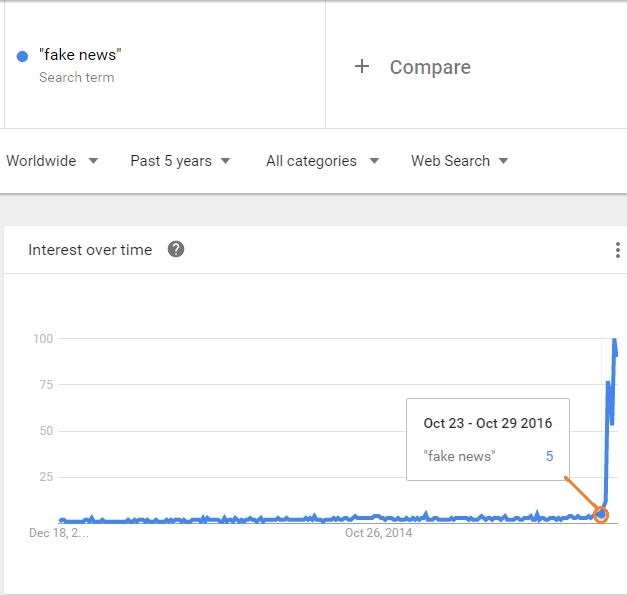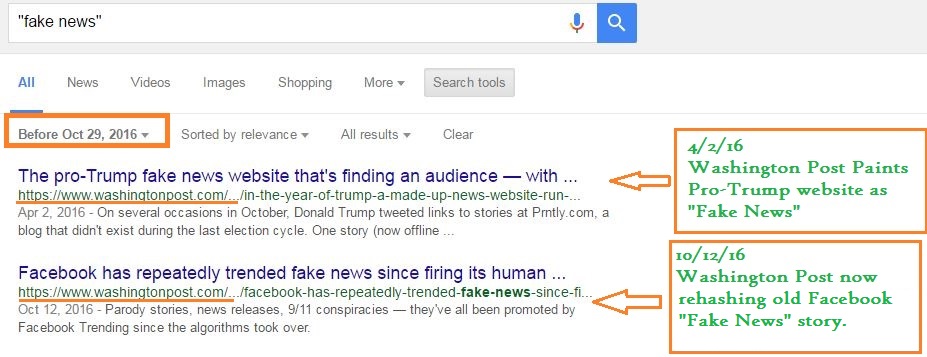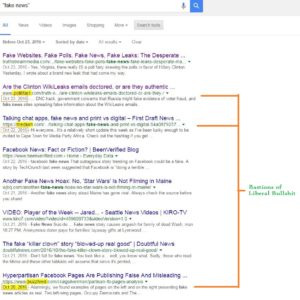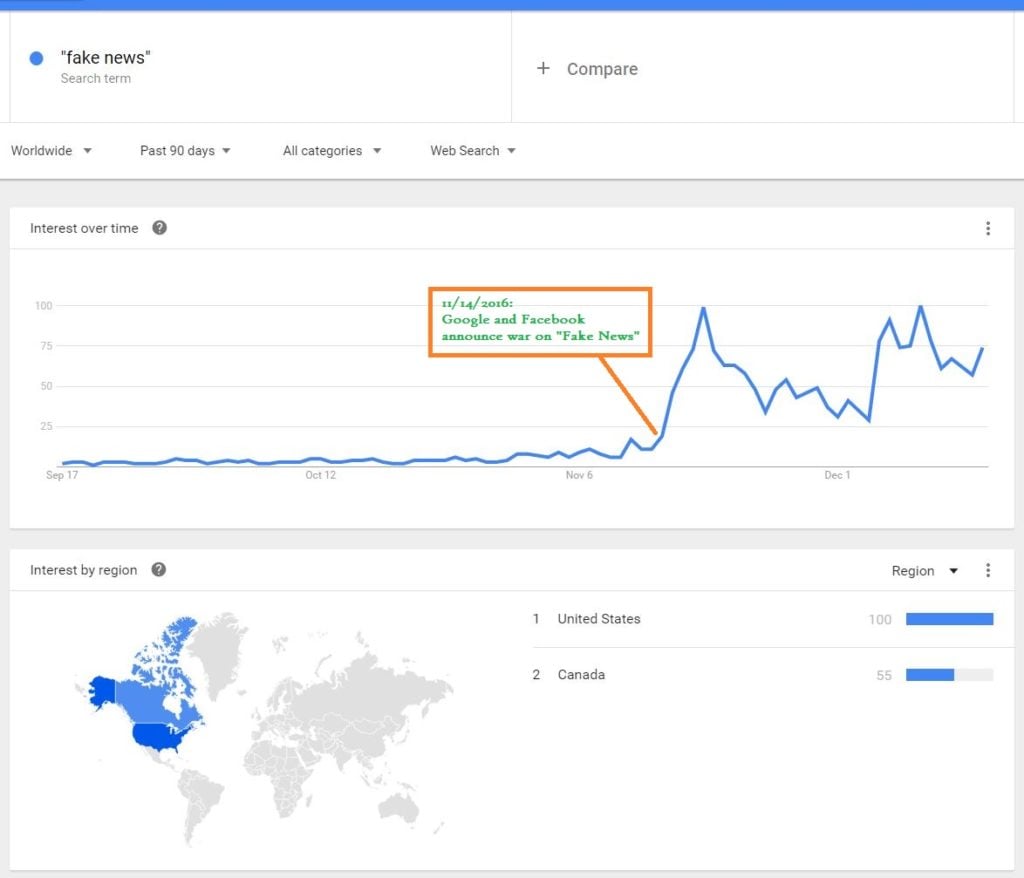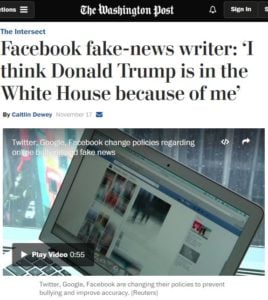It's a curious thing, this attempt of mine to make sense of the future by understanding what’s happened in the past. One of the most curious things about it, at least to me, is the passion with which so many people insist that this isn’t an option at all. In any other context, “Well, what happened the last time someone tried that?” is one of the first and most obviously necessary questions to ask and answer—but heaven help you if you try to raise so straightforward a question about the political, economic, and social phenomena of the present day.
In previous posts here we’ve talked about thoughtstoppers of the “But it’s different this time!” variety, and some of the other means people these days use to protect themselves against the risk of learning anything useful from the hard-earned lessons of the past. This week I want to explore another, subtler method of doing the same thing. As far as I’ve been able to tell, it’s mostly an issue here in the United States, but here it’s played a remarkably pervasive role in convincing people that the only way to open a door marked PULL is to push on it long and hard enough.
It’s going to take a bit of a roundabout journey to make sense of the phenomenon I have in mind, so I’ll have to ask my readers’ forbearance for what will seem at first like several sudden changes of subject.
One of the questions I field tolerably often, when I discuss the societies that will rise after modern industrial civilization finishes its trajectory into history’s compost heap, is whether I think that consciousness evolves. I admit that until fairly recently, I was pretty much at a loss to know how to respond. It rarely took long to find out that the questioner wasn’t thinking about the intriguing theory Julian Jaynes raised in The Origins of Consciousness in the Breakdown of the Bicameral Mind, the Jungian conception Erich Neumann proposed in The Origins and History of Consciousness, or anything of the same kind. Nor, it turned out, was the question usually based on the really rather weird reinterpretations of evolution common in today’s pop-spirituality scene. Rather, it was political.
It took me a certain amount of research, and some puzzled emails to friends more familiar with current left-wing political jargon than I am, to figure out what was behind these questions. Among a good-sized fraction of American leftist circles these days, it turns out it’s become a standard credo that what drives the kind of social changes supported by the left—the abolition of slavery and segregation, the extension of equal (or more than equal) rights to an assortment of disadvantaged groups, and so on—is an ongoing evolution of consciousness, in which people wake up to the fact that things they’ve considered normal and harmless are actually intolerable injustices, and so decide to stop.
Those of my readers who followed the late US presidential election may remember Hillary Clinton’s furious response to a heckler at one of her few speaking gigs: “We aren’t going back. We’re going forward.” Underlying that outburst is the belief system I’ve just sketched out: the claim that history has a direction, that it moves in a linear fashion from worse to better, and that any given political choice—for example, which of the two most detested people in American public life is going to become the nominal head of a nation in freefall ten days from now—not only can but must be flattened out into a rigidly binary decision between “forward” and “back.”
There’s no shortage of hard questions that could be brought to bear on that way of thinking about history, and we’ll get to a few of them a little later on, but let’s start with the simplest one: does history actually show any such linear movement in terms of social change?
It so happens that I’ve recently finished a round of research bearing on exactly that question, though I wasn’t thinking of politics or the evolution of consciousness when I launched into it. Over the last few years I’ve been working on a sprawling fiction project, a seven-volume epic fantasy titled
The Weird of Hali, which takes the horror fantasy of H.P. Lovecraft and stands it on its head, embracing the point of view of the tentacled horrors and multiracial cultists Lovecraft liked to use as images of dread. (The first volume,
Innsmouth, is
in print in a fine edition and will be out in trade paper this spring, and the second,
Kingsport,
is available for preorder and will be published later this year.)
One of Lovecraft’s few memorable human characters, the intrepid dream-explorer Randolph Carter, has an important role in the fourth book of my series. According to Lovecraft, Carter was a Boston writer and esthete of the1920s from a well-to-do family, who had no interest in women but a whole series of intimate (and sometimes live-in) friendships with other men, and decidedly outré tastes in interior decoration—well, I could go on. The short version is that he’s very nearly the perfect archetype of an upper-class gay man of his generation. (Whether Lovecraft intended this is a very interesting question that his biographers don’t really answer.) With an eye toward getting a good working sense of Carter’s background, I talked to a couple of gay friends, who pointed me to some friends of theirs, and that was how I ended up reading George Chauncey’s magisterial Gay New York: Gender, Urban Culture, and the Makings of the Gay Male World, 1890-1940.
What Chauncey documents, in great detail and with a wealth of citations from contemporary sources, is that gay men in America had substantially more freedom during the first three decades of the twentieth century than they did for a very long time thereafter. While homosexuality was illegal, the laws against it had more or less the same impact on people’s behavior that the laws against smoking marijuana had in the last few decades of the twentieth century—lots of people did it, that is, and now and then a few of them got busted. Between the beginning of the century and the coming of the Great Depression, in fact, most large American cities had a substantial gay community with its own bars, restaurants, periodicals, entertainment venues, and social events, right out there in public.
Nor did the gay male culture of early twentieth century America conform to current ideas about sexual identity, or the relationship between gay culture and social class, or—well, pretty much anything else, really. A very large number of men who had sex with other men didn’t see that as central to their identity—there were indeed men who embraced what we’d now call a gay identity, but that wasn’t the only game in town by a long shot. What’s more, sex between men was by and large more widely accepted in the working classes than it was further up the social ladder. In turn-of-the-century New York, it was the working class gay men who flaunted the camp mannerisms and the gaudy clothing; upper- and middle-class gay men such as Randolph Carter had to be much more discreet.
So what happened? Did some kind of vast right-wing conspiracy shove the ebullient gay male culture of the early twentieth century into the closet? No, and that’s one of the more elegant ironies of this entire chapter of American cultural history. The crusade against the “lavender menace” (I’m not making that phrase up, by the way) was one of the pet causes of the same Progressive movement responsible for winning women the right to vote and breaking up the fabulously corrupt machine politics of late nineteenth century America. Unpalatable as that fact is in today’s political terms, gay men and lesbians weren’t forced into the closet in the 1930s by the right. They were driven there by the left.
This is the same Progressive movement, remember, that made Prohibition a central goal of its political agenda, and responded to the total failure of the Prohibition project by refusing to learn the lessons of failure and redirecting its attentions toward banning less popular drugs such as marijuana. That movement was also, by the way, heavily intertwined with what we now call Christian fundamentalism. Some of my readers may have heard of William Jennings Bryan, the supreme orator of the radical left in late nineteenth century America, the man whose “Cross of Gold” speech became the great rallying cry of opposition to the Republican corporate elite in the decades before the First World War. He was also the prosecuting attorney in the equally famous Scopes Monkey Trial, responsible for pressing charges against a schoolteacher who had dared to affirm in public Darwin’s theory of evolution.
The usual response of people on today’s left to such historical details—well, other than denying or erasing them, which is of course quite common—is to insist that this proves that Bryan et al. were really right-wingers. Not so; again, we’re talking about people who put their political careers on the line to give women the vote and weaken (however temporarily) the grip of corporate money on the US political system. The politics of the Progressive era didn’t assign the same issues to the categories “left” and “right” that today’s politics do, and so all sides in the sprawling political free-for-all of that time embraced some issues that currently belong to the left, others that belong to the right, and still others that have dropped entirely out of the political conversation since then.
I could go on, but let’s veer off in another direction instead. Here’s a question for those of my readers who think they’re well acquainted with American history. The Fifteenth Amendment, which granted the right to vote to all adult men in the United States irrespective of race, was ratified in 1870. Before then, did black men have the right to vote anywhere in the US?
Most people assume as a matter of course that the answer must be no—and they’re wrong. Until the passage of the Fifteenth Amendment, the question of who did and didn’t have voting rights was a matter for each state to decide for itself. Fourteen states either allowed free African-American men to vote in Colonial times or granted them that right when first organized. Later on, ten of them—Delaware in 1792, Kentucky in 1799, Maryland in 1801, New Jersey in 1807, Connecticut in 1814, New York in 1821, Rhode Island in 1822, Tennessee in 1834, North Carolina in 1835, and Pennsylvania in 1838—either denied free black men the vote or raised legal barriers that effectively kept them from voting. Four other states—Massachusetts, Vermont, New Hampshire, and Maine—gave free black men the right to vote in Colonial times and maintained that right until the Fifteenth Amendment made the whole issue moot. Those readers interested in the details can find them in The African American Electorate: A Statistical History by Hanes Walton Jr. et al., which devotes chapter 7 to the subject.
So what happened? Was there a vast right-wing conspiracy to deprive black men of the right to vote? No, and once again we’re deep in irony. The political movements that stripped free American men of African descent of their right to vote were the two great pushes for popular democracy in the early United States, the Democratic-Republican party under Thomas Jefferson and the Democratic party under Andrew Jackson. Read any detailed history of the nineteenth century United States and you’ll learn that before these two movements went to work, each state set a certain minimum level of personal wealth that citizens had to have in order to vote. Both movements forced through reforms in the voting laws, one state at a time, to remove these property requirements and give the right to vote to every adult white man in the state. What you won’t learn, unless you do some serious research, is that in many states these same reforms also stripped adult black men of their right to vote.
Try to explain this to most people on the leftward end of today’s American political spectrum, and you’ll likely end up with a world-class meltdown, because the Jeffersonian Democratic-Republicans and the Jacksonian Democrats, like the Progressive movement, embraced some causes that today’s leftists consider progressive, and others that they consider regressive. The notion that social change is driven by some sort of linear evolution of consciousness, in which people necessarily become “more conscious” (that is to say, conform more closely to the ideology of the contemporary American left) over time, has no room for gay-bashing Progressives and Jacksonian Democrats whose concept of democracy included a strict color bar. The difficulty, of course, is that history is full of Progressives, Jacksonian Democrats, and countless other political movements that can’t be shoehorned into the Procrustean bed of today’s political ideologies.
I could add other examples—how many people remember, for example, that environmental protection was a cause of the far right until the 1960s?—but I think the point has been made. People in the past didn’t divide up the political causes of their time into the same categories left-wing activists like to use today. It’s practically de rigueur for left-wing activists these days to insist that people in the past ought to have seen things in today’s terms rather than the terms of their own time, but that insistence just displays a bad case of chronocentrism.
Chronocentrism? Why, yes. Most people nowadays are familiar with ethnocentrism, the insistence by members of one ethnic group that the social customs, esthetic notions, moral standards, and so on of that ethnic group are universally applicable, and that anybody who departs from those things is just plain wrong. Chronocentrism is the parallel insistence, on the part of people living in one historical period, that the social customs, esthetic notions, moral standards, and so on of that period are universally applicable, and that people in any other historical period who had different social customs, esthetic notions, moral standards, and so on should have known better.
Chronocentrism is pandemic in our time. Historians have a concept called “Whig history;” it got that moniker from a long line of English historians who belonged to the Whig, i.e., Liberal Party, and who wrote as though all of human history was to be judged according to how well it measured up to the current Liberal Party platform. Such exercises aren’t limited to politics, though; my first exposure to the concept of Whig history came via university courses in the history of science. When I took those courses—this was twenty-five years ago, mind you—historians of science were sharply divided between a majority that judged every scientific activity in every past society on the basis of how well it conformed to our ideas of science, and a minority that tried to point out just how difficult this habit made the already challenging task of understanding the ideas of past thinkers.
To my mind, the minority view in those debates was correct, but at least some of its defenders missed a crucial point. Whig history doesn’t exist to foster understanding of the past. It exists to justify and support an ideological stance of the present. If the entire history of science is rewritten so that it’s all about how the currently accepted set of scientific theories about the universe rose to their present privileged status, that act of revision makes currently accepted theories look like the inevitable outcome of centuries of progress, rather than jerry-rigged temporary compromises kluged together to cover a mass of recalcitrant data—which, science being what it is, is normally a more accurate description.
In exactly the same sense, the claim that a certain set of social changes in the United States and other industrial countries in recent years result from the “evolution of consciousness,” unfolding on a one-way street from the ignorance of the past to a supposedly enlightened future, doesn’t help make sense of the complicated history of social change. It was never supposed to do that. Rather, it’s an attempt to backstop the legitimacy of a specific set of political agendas here and now by making them look like the inevitable outcome of the march of history. The erasure of the bits of inconvenient history I cited earlier in this essay is part and parcel of that attempt; like all linear schemes of historical change, it falsifies the past and glorifies the future in order to prop up an agenda in the present.
It needs to be remembered in this context that the word “evolution” does not mean “progress.” Evolution is adaptation to changing circumstances, and that’s all it is. When people throw around the phrases “more evolved” and “less evolved,” they’re talking nonsense, or at best engaging in a pseudoscientific way of saying “I like this” and “I don’t like that.” In biology, every organism—you, me, koalas, humpback whales, giant sequoias, pond scum, and all the rest—is equally the product of a few billion years of adaptation to the wildly changing conditions of an unstable planet, with genetic variation shoveling in diversity from one side and natural selection picking and choosing on the other. The habit of using the word “evolution” to mean “progress” is pervasive, and it’s pushed hard by the faith in progress that serves as an ersatz religion in our time, but it’s still wrong.
It’s entirely possible, in fact, to talk about the evolution of political opinion (which is of course what “consciousness” amounts to here) in strictly Darwinian terms. In every society, at every point in its history, groups of people are striving to improve the conditions of their lives by some combination of competition and cooperation with other groups. The causes, issues, and rallying cries that each group uses will vary from time to time as conditions change, and so will the relationships between groups—thus it was to the advantage of affluent liberals of the Progressive era to destroy the thriving gay culture of urban America, just as it was to the advantage of affluent liberals of the late twentieth century to turn around and support the struggle of gay people for civil rights. That’s the way evolution works in the real world, after all.
This sort of thinking doesn’t offer the kind of ideological support that activists of various kinds are used to extracting from various linear schemes of history. On the other hand, that difficulty is more than balanced by a significant benefit, which is that linear predictions inevitably fail, and so by and large do movements based on them. The people who agreed enthusiastically with Hillary Clinton’s insistence that “we aren’t going back, we’re going forward” are still trying to cope with the hard fact that their political agenda will be wandering in the wilderness for at least the next four years. Those who convince themselves that their cause is the wave of the future are constantly being surprised by the embarrassing discovery that waves inevitably break and roll back out to sea. It’s those who remember that history plays no favorites who have a chance of accomplishing their goals.
















 A new wide-ranging survey of police officers around the country from the the Pew Research Center reveals a vast majority believe that the focus by the media and protesters on incidents of police violence have made their job more difficult.
A new wide-ranging survey of police officers around the country from the the Pew Research Center reveals a vast majority believe that the focus by the media and protesters on incidents of police violence have made their job more difficult. It looks like the propaganda wing of the establishment has decided to
It looks like the propaganda wing of the establishment has decided to 